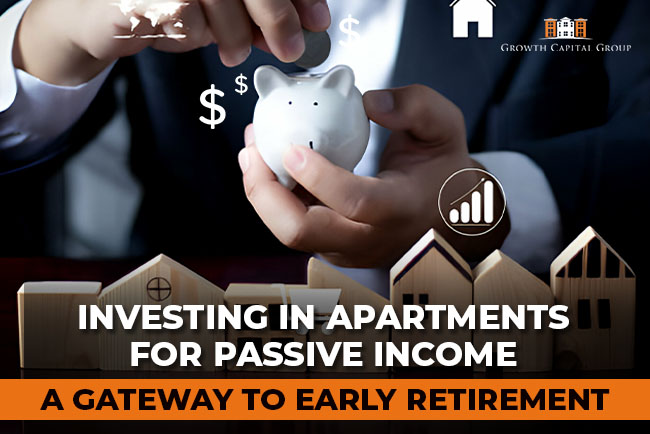Introduction to Passive Income through Apartment Investments
In 2024, the quest for sustainable and reliable passive income streams has led savvy traders to your step of condominium investments. The attraction of generating constant rental income even as capitalizing on belongings appreciation makes condominium investing an engaging assignment, in particular within the dynamic economic panorama we navigate nowadays.
Apartment Investing
Before diving into the deep quit, it’s essential to grasp the fundamentals of generating passive income through apartment investments. This manner information the sorts of houses available, the economics at the back of successful investments, and the important thing metrics to watch.
Choosing Apartments for Your Investment Portfolio?
Apartments investing offer a unique mixture of benefits now not located in other funding classes: scalability, demand resilience, and the capacity to leverage. These factors combine to make apartment making an investment a cornerstone approach for those looking to build wealth through the years.
The 2024 Outlook for Apartment Investments
Market Trends and Economic Indicators
Navigating the 2024 market requires a eager know-how of present day developments and monetary indicators. Factors consisting of urban migration, demographic shifts, and employment costs play significant roles in shaping the investment panorama.
The Impact of Inflation and Interest Rates in 2024
Inflation and hobby rates are pivotal in determining the price of borrowing and the general beauty of funding possibilities. A strategic investor must preserve a pulse on these factors to time their investments accurately.
Learn More – Passive Investors Checklist
How to Get Started with Apartment Investing
Identifying the Right Properties
Finding the right assets involves extra than simply scouting locations. It calls for a deep dive into market analytics, understanding network dynamics, and spotting the capability for cost addition.
Traditional Mortgages vs. Creative Financing
Exploring financing options is fundamental to unlocking investment opportunities. From traditional mortgages to more innovative financing techniques, information the spectrum of possibilities can significantly effect your funding’s fulfillment.
Investing in apartments and Managing Them for Maximum Return
Effective Property Management Strategies
Effective property management is the spine of successful rental investing. This encompasses the whole thing from tenant members of the family to protection, making sure your funding stays lucrative and adequately maintained.
Maximizing Occupancy and Rental Income
Occupancy fees and condominium income are direct indicators of your investment’s performance. Strategies in these metrics are essential for lengthy-term achievement.
Technology in Apartment Investing
Leveraging PropTech for Efficiency and Profitability
The rise of asset generation (PropTech) has revolutionized the way traders control and optimize their residences.It gives more efficiency and profitability.
Conclusion:
Investing in apartments for passive income in 2024 represents a strategic wealth-building approach that aligns with current market trends and long-term financial goals. The unique combination of capital appreciation, steady cash flow, and tax advantages makes apartment investments particularly appealing. However, success in this venture requires thorough market research, sound financial planning, and, importantly, an understanding of the nuances of property Investment.
FAQs
- Is investing in apartment buildings a perfect strategy for beginners?
Investing in apartment homes can be a fantastic method for novices, furnished with thorough studies and probable companions with experienced buyers or experts within the early tiers.
- How can I finance my apartment investment?
Financing alternatives consist of traditional mortgages, commercial loans, and private creditors. Evaluating your economic scenario and investment dreams will assist in determining the high-quality financing route.
- What are the primary challenges of apartment investing?
Main demanding situations encompass managing vacancies, dealing with maintenance problems, and navigating tenant members of the family efficiently.
- How does an apartment making an investment assist in retirement-making plans?
Apartments that invest can offer steady passive profits and property appreciation, which can be beneficial for constructing a retirement fund.
- Can I invest in apartments without staying in the United States?
Yes, global traders can put money into U.S. Apartment homes. However, it’s crucial to understand the prison and tax implications, which might require consulting with an actual property attorney or tax professional.





